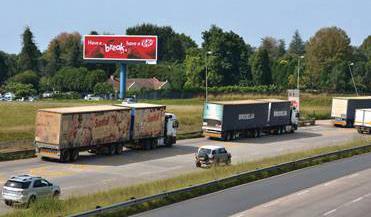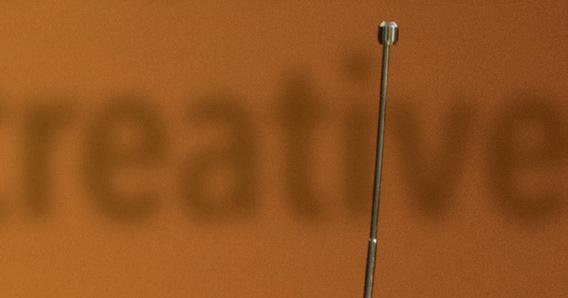
10 minute read
CREATIVITY’S EFFECTIVENESS CRISIS
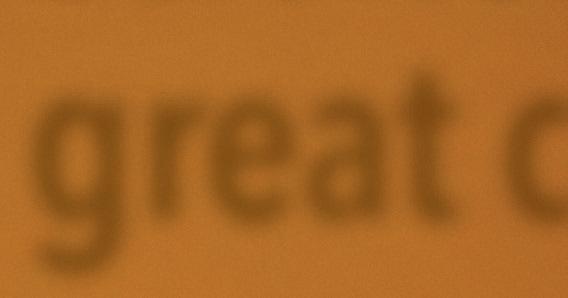
The art and science behind great creative
Creativity is facing an effectiveness crisis. But if your brand is willing to learn from the best-performing creatively awarded campaigns, you can solve this before the next ad break, write MONIQUE CLAASSEN, NATALIE BOTHA and DAREN POOLE.
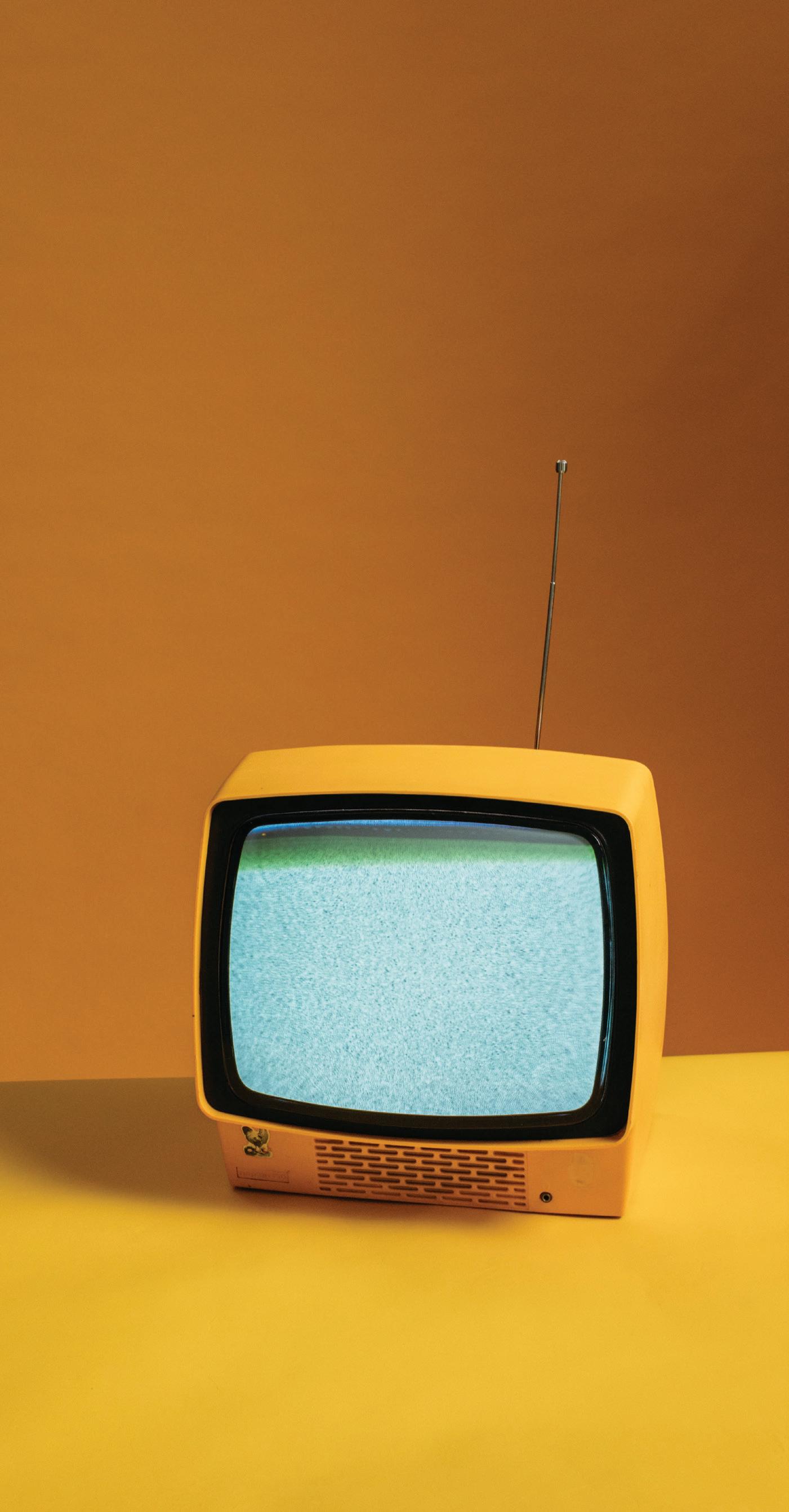
With everything from the daily grind to after-hours entertainment and even religious life markers such as weddings and funerals having shifted location from the real world to our ever-present screens, it’s little wonder the ‘screen queens’ – that’s TV, mobile and digital out-of-home (DOOH) – are marketers’ primary platforms of choice in 2021. In fact, our CrossMedia database reveals that South Africans watch almost double the global average when it comes to linear TV, with streaming content hot on its heels.
Our CrossMedia database also tells us that globally, the key levers for paid media driving greater brand salience in cut-through campaigns comprise two crucial elements: suffi cient investment to drive exposure within the core target audience; and stand-out creative to drive brand engagement and communicate core messages. So the best way to ensure media ROI is to start with great creative.

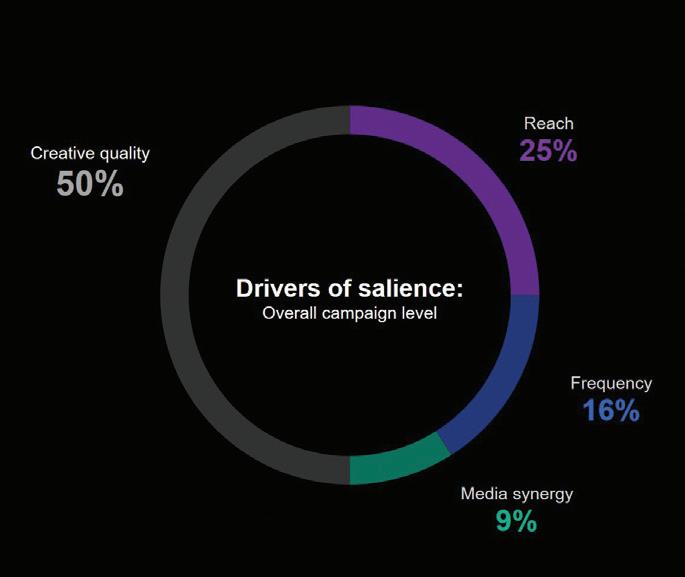

FROM TEST PATTERNS TO STREAMING VIDEO
TV advertising remains the most effective way to reach mass audiences, with the highest average reach among all paid media touchpoints, despite digital leapfrogging traditional platforms to reach further corners of our country. Advertisers have taken note and scrambled to optimise content for the full range of linear channels and streaming platforms now available, but the IPA clarifi es in its The Crisis in Creative Effectiveness report that there’s just too much content that’s narrowly targeted and lacks brand building across TV, OOH and online video.
You want your audience to do more than rush to click on your latest digital promo or dash in-store after your prime time ad airs; you want them to keep your brand top-of-mind long after the ad has been seen and to become long-term advocates of what your brand stands for. That means going beyond simply taking the same video across TV and digital formats to understanding how the content will be consumed, and adapting it to the right channel and media to increase its impact.
Unfortunately, the budget allocated to brand building among the world’s most creatively awarded campaigns has fallen to just 66% over the last four years, 10 percentage points below optimum. No wonder creativity is facing an effectiveness crisis.
NOW PLAYING ON A SCREEN NEAR YOU… TAKEAWAYS FROM KANTAR’S CREATIVE EFFECTIVENESS AWARDS
Successful advertisers know the hard work starts long before the ad is produced. You need to build on consumer insights to identify a creative territory for the brand, as a foundation for ads that run across channels, markets, cultures and time. Now in its second year, Kantar’s Creative Effectiveness Awards celebrate this, highlighting the top characteristics that make ads effective with consumers today, based on analysis of 10 000+ ads around the world throughout 2020 through our ad-testing solution, Link.
1. Be distinctive. Stand out from the clutter to be noticed and remembered, as you’re competing for attention against numerous multiple screens. Be distinctive in a way that makes sense for your brand, whether that’s a catchy backing track or breaking the mould of what audiences expect from your category.
2. Brand intrinsically. Get your branding cues right, as most advertising only works a while after exposure. Instead of ashing your logo at the end of the ad, aim for strong integration in the storyline and a consistent creative approach across your brand portfolio. Think along the lines of Old Spice, Volvo Trucks and Heineken.
3. Be meaningfully different. Grow market share and defend premium pricing by going beyond ful lling consumers’ functional needs to also meeting emotional and social needs. Illustrate your uniqueness to position your brand in a meaningful and different way in people’s memories.
4. Trigger an emotional response. People feel before they think, so that’s the key to winning engagement and bypassing the natural tendency to screen out advertising. Leave impressions of the brand as caring, funny, loveable or ‘a brand for me’ through sharing heart-warming stories that generate more impact, driving short-term sales while building long-term brand equity.
5. Talk with the audience. It’s easy to get so close to the brand that you lose perspective. Test your ads with your target audience and take their feedback onboard throughout the creative development process to re ne your ads accordingly.
But beware! Simply copying these tactics may break the rst one of being distinctive. There’s no ‘one-size- ts-all’ approach to creativity, so do what’s right for your brand, in your market. Use this as inspiration around what’s already proven effective for brands all over the world and recognise the power of creative to build stronger brands for the South Africa ad landscape.
But if your brand is willing to learn from the best-performing creatively awarded campaigns, you can solve this before the next ad break.
Maximising content also maximises in-market sales performance, tying in with the latest WARC learning that highly creative and effective ideas are more than twice as likely to lead with TV as any other channel. So, before you rewrite the script and get ready for ‘Lights, camera, action!’, remember the key lever of paid media driving greater brand exposure is consistency and quality of creative.
Is your brand investing enough time and budget to ensure incredible creative quality? Do you know what to include in your creative?
WHAT SOUTH AFRICA AUDIENCES WANT FROM ADVERTISERS IN 2021
Kantar’s syndicated Covid-19 Barometer study into how the pandemic influences consumer behaviour, attitudes and expectations among more than 150 000 people globally found that only 8% of South Africans wanted advertising to stop when the pandemic first hit. Instead, the need for media to provide an escape hatch while shining a light to guide us was clearly evident – so much so that the advertisers who held their resolve in the creative investment downturn saw their bravery rewarded, with a clear hierarchy of response to advertising content appearing in the first waves of lockdown.
This was supported by Kantar’s Link database, based on 4 824 global TV, digital and static ads tested from May to November 2020. While the pandemic certainly dominated last year’s ad landscape, it’s the ads that showed how brands are taking concrete action, tangibly helping people, with ‘business as usual’ ads bearing no reference at all to Covid-19 performing second-best. Despite stimulating good emotional response, emotional support ads of the ‘We’re there for you’ type actually performed poorly in terms of effectiveness.
Meanwhile, ads that merely referenced the pandemic as an aside needn’t have bothered, as our data shows it’s better to stick to established campaigns when you don’t have anything concrete to say.
These prevailing sentiments have continued, with the end of the pandemic a vague and hazy prospect down the line. Audiences want things to return to normal but they’re not as sensitive as they were a few months ago, so there’s no need to cut back on ads on the funnier side of life. Because while brands should obviously avoid mocking or making fun of the situation, having a sense of humour during what’s been a dangerous and difficult time for many may help us all smile a little more readily.
Looking at the other end of the spectrum, brands that went dark and pulled the plug on all advertising quickly saw the light as they noticed significant declines in saliency or ability to come to mind compared to brands that maintained a level of in-market presence. It’s therefore vital that marketers consider how they continue to build longer-term preference, so they are prepared for when the situation eventually recovers, as brands that hold their nerve while competitors reduce spend are likely to benefit strongly.
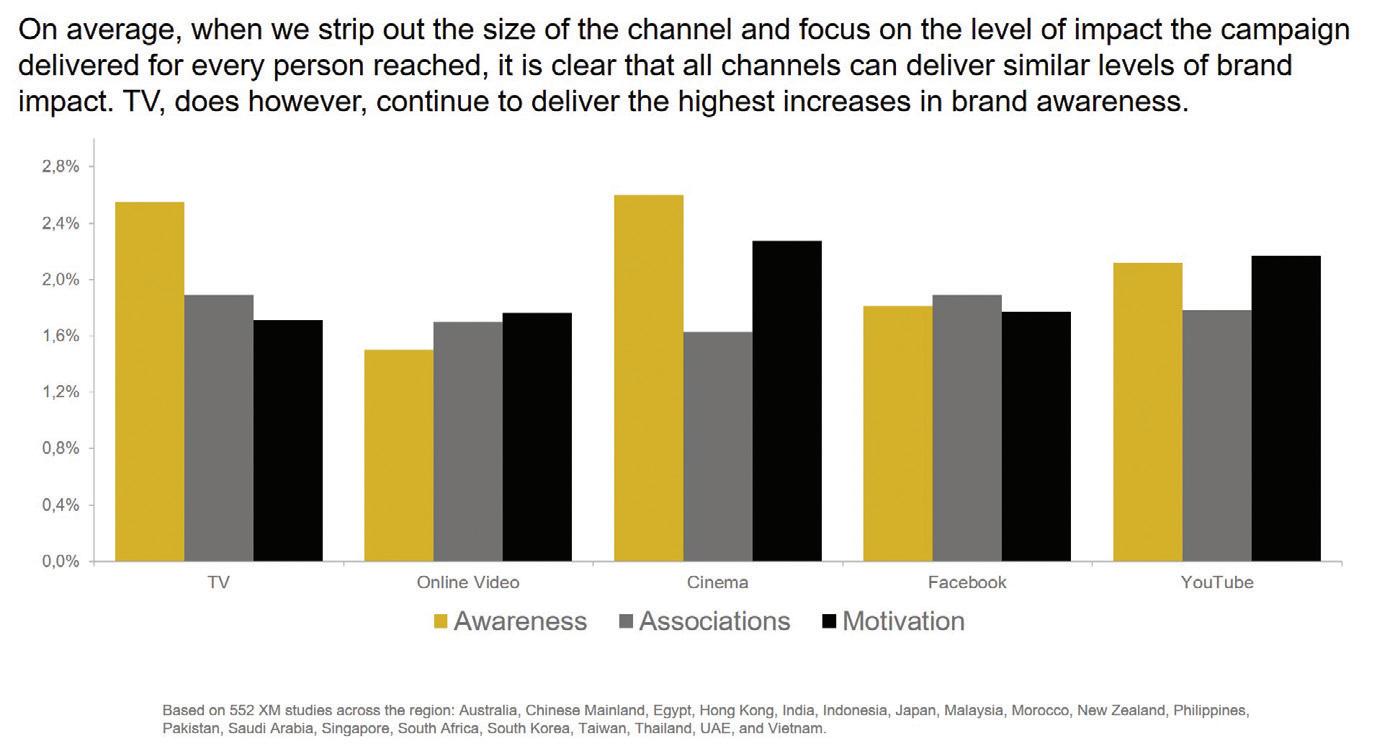
As can be seen, TV continues to deliver the highest increases in brand awareness Head of Kantar’s Media & Digital Practice in South Africa, Monique Claassen has a knowledge of complex media projects that, coupled with her insatiable appetite for digital trends, maximises clients’ media investment decisions. As Kantar’s director of creative development, Natalie Botha works with marketers and agencies to create effective and impactful advertising that leaves a lasting impression and delivers strong ROI for brands.
As global head of creative, Daren Poole is responsible for Kantar’s creative development and testing solutions, as well as thought leadership based on his extensive experience in optimising creative content with data.
The art of racing on slippery slopes
From the racetrack to the highways, Stevan Wilken has a route map for his motorcar and his media.
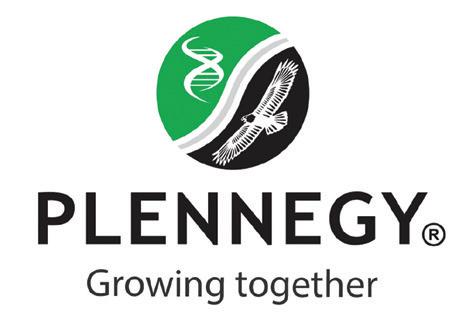
In The Art of Racing in the Rain, Garth Stein observes, “In racing, they say that your car goes where your eyes go. The driver who cannot tear his eyes away from the wall as he spins out of control will meet that wall; the driver who looks down the track as he feels his tyres break free will regain control of his vehicle.”
Face First founder and managing director Stevan Wilken similarly reflects on his journey over the last decade in taking the company from the humble dirt roads of the Midlands onto the busy freeways of KwaZulu-Natal.
As young boy growing up in the
Midlands, he tested the limits of his own abilities and the patience of those around him. “I was always an adventurer at heart, yet grounded in the simplicity of small-town life that somehow kindled the desire to venture beyond. Growing up in a happy family also taught me the immensity of teams, a good sense of direction and a keen eye to choose my best line through a bend,” he says.
The family man and enthusiastic rallycross driver turned entrepreneur is about to become one of the 10 largest out-of-home media owners in South Africa. And as if this wasn’t enough to manage, he has set his eyes on the Dakar Rally 2022/23 season to lead a proudly South African team in the ultimate feat of endurance, tenacity and pride.
“I like to lead from the front, set the pace and keep my eyes firmly on the road ahead,” Wilken explains. This approach to life and business mastered on muddied rally tracks has spearheaded Face First Media’s rise to prominence – especially in KwaZuluNatal and more recently in Gauteng and Cape Town. Face First Media has developed an extensive inventory that now comprises over 180 premium and strategically located advertising sites, the largest billboard holding in KwaZulu-Natal.
“Once you have enrolled yourself in the race, you need a clear route map, an adept support team and a great navigator to allow you to push your driving skills to the limit, confidently handle the off-road conditions and bravely attempt the fast pull-offs and power slides,” Wilken continues. “It is this understanding I have carried through in my business. I make sure I always surround myself with an impeccable team to enable me to push ahead, trust my instincts and steer my car where my eyes go.”
Engaging Wilken on his route map for Face First Media, a picture comes into view of a provocateur who set his sights on disrupting the long standing of certain companies over KwaZulu-Natal’s metropolitan highways and arterial networks.
“Over time my game plan took shape around this clear route map, and my execution meant keeping my eyes on the unfolding road and where I needed to make tactical adjustments to navigate slippery conditions, without changing course or blinking my eyes.”
He and his team are part of a leading group of media owners now pioneering digital out-of-home (DOOH) in South Africa. Face First Media has introduced a trio of LED Digital Super Signs on all incoming highways into Durban, the only company currently able to offer full digital coverage on the N3, N2 and M4.
Looking ahead, Wilken says, “We will reimagine new ways companies can benefit from DOOH, while I continue along my own art of racing in the rain.”
This is sponsored content.
